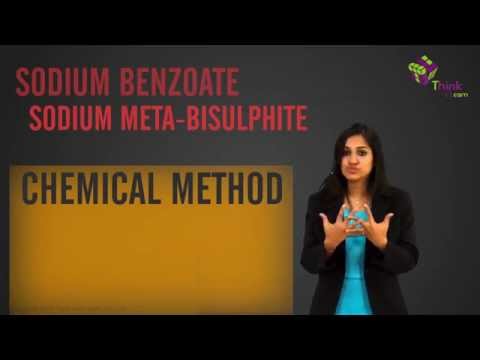What is Food Chemistry?
As the name implies, food chemistry is the branch of chemistry that deals with the chemistry behind the biochemical nature of food, its properties and how they are processed in the body. It involves the study of chemical components from proteins to carbohydrates and more. In food chemistry, we learn how different processing techniques affect a certain type of food and also ways to enhance the quality of food.

Food Chemistry
Table of Contents
- Examples of Food Chemistry
- Recommended Videos
- Components of the Food we eat
- Frequently Asked Questions – FAQs
Examples of Food Chemistry
There are certain food technologies which we experience in our daily lives which we do not know are the results of innovations in food chemistry. Some examples are:
- Fermentation of dairy products: Apart from natural fermentation, to speed up the process we use microorganisms which aid the process of conversion from lactose to lactic acid.
- Fat & Sugar Substitutes: We know how fat & sugar cause different ailments, but with the help of food chemistry, chemists are coming up with substitutes which offer the same taste without the bad effects.
Recommended Videos

Components of the Food we eat
1. Water
Water is a major component of almost every type of food we eat. But water also provides a place for bacterial growth which leads to food spoilage. Thus measuring the amount of water in a food item can be used to measure the shell life of an object.
The shelf life can be altered by different methods such as:
- Refrigeration\Freezing
- Dehydration
Percentage of water in food:
- Meat – 50%
- Eggs – 75%
- Watermelon – 92%
- Lettuce – 95%
- Cucumber – 96%
2. Carbohydrates
A carbohydrate is a biomolecule which is responsible for providing energy for most organisms. They are also known as saccharides. They are found in white bread, sugars, candies, fruits, vegetables, pulses, and wholemeal pasta.
Some examples of Carbohydrates are:
Glucose, galactose, fructose, glucose, galactose, fructose,
General Formula – Cx(H2O)y
Structure

Carbohydrates Structure
Carbohydrates can be classified as:
- Monosaccharides
- Disaccharides
- Polysaccharides
3. Lipids
The term lipids refer to “non-polar” compounds or water-insoluble compounds of biological origin. The main functions of lipids are:
- Storing energy
- Signalling
- As structural components of cell membranes
Types of lipids
- Fatty acids
- Glycerolipids
- Glycerophospholipids
- Sphingolipids
- Sterol lipids
- Prenol lipids
- Saccharolipids
- Polyketides
Structure

Lipids Structure
4. Proteins
Proteins play a fundamental role in the structure and functioning of a cell. Proteins in food are important for the survival and growth of a human being. They are essential building blocks of human tissue and in extreme cases serve as a fuel source. Some common sources of proteins through food are:
- Meat
- Milk
- Eggs
Protein structure

Structure of Protein
Frequently Asked Questions – FAQs
How is chemistry used in food?
Why is food chemistry important?
As a major division of food science, food chemistry deals with the structure and properties of foods and the chemical modifications they face. In order to ensure the food manufactured is healthy and of good quality, food chemists often play a significant role.
How is chemistry used in everyday life?
Chemistry can be found in the foods we consume, the air we breathe, the cleansing of toxins, our feelings, and practically anything we can see or touch in everyday life. There may be some typical chemistry that is evident, but others may surprise us. Our body consists of chemical compounds which are ingredient combinations.
How is chemistry used in cosmetics?
To have an enticing scent, chemicals, both natural and synthetic, are applied to cosmetics. To mask the smell of other chemicals, including ‘unscented’ items can contain masking fragrances. There are over 3,000 ingredients used globally to manufacture the vast variety of fragrances used in consumer goods.
How is chemistry used in agriculture?
Scores of herbicides, insecticides, fungicides, and other pesticides, plant growth inhibitors, fertilizers, and animal feed supplements include chemical products produced to assist in the processing of fruit, feed, and fibre.
Thus, here we have discussed what is food chemistry, some components involved in food chemistry and applications of food chemistry. To learn more, register with BYJU’S.

Comments